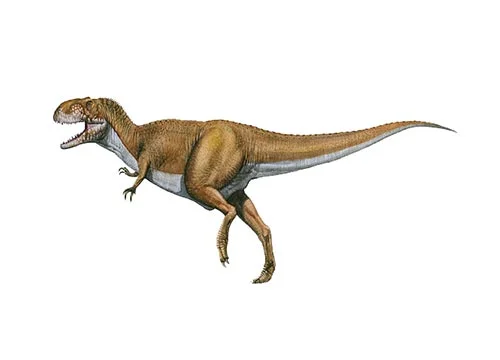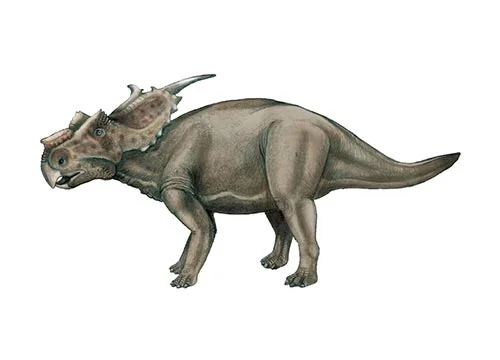Conchoraptor (Conch thief)

Conch-o-rap-tor
Rinchen Barsbold - 1986
Carnivore
Estimated 2-3 meters long
Small Theropod
C. gracilis (type)
Mongolia - Barun Goyot Formation
Late Jurassic Period, 150 million years ago
Conchoraptor Facts
Conchoraptor is a genus of small, feathered theropod dinosaur that lived in the Late Jurassic Period, approximately 150 million years ago. It was first discovered in the Shishugou Formation in China and is known from several well-preserved specimens, including a complete skeleton.
The name Conchoraptor means “conch thief,” which refers to its sharp, hooked beak that would have been ideal for cracking open shellfish, its primary food source. This dinosaur was approximately 2 to 3 meters long and weighed around 30 kilograms. It had a relatively long and slender body, with long arms and legs, and was likely an agile runner.
One of the most interesting features of Conchoraptor is that it had feathers, which is unusual for a dinosaur of its size. The discovery of feathers on this dinosaur supports the idea that many small theropod dinosaurs were covered in feathers and that feathers may have evolved for purposes other than flight, such as insulation and display.
Conchoraptor was a part of a diverse group of small, feathered theropods that lived in the Late Jurassic period. This group of dinosaurs is thought to have been the ancestors of birds, and the discovery of Conchoraptor helps to fill in our understanding of the evolutionary journey from dinosaurs to birds.
Overall, Conchoraptor is a fascinating dinosaur that provides us with important insights into the evolution of feathers and the early stages of the theropod-bird transition. Its unique features, including its hooked beak and feathered body, make it a valuable addition to our understanding of dinosaur biology and evolution.



